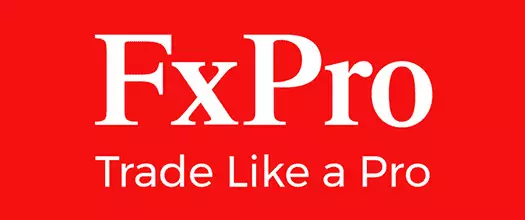Swing trading is a popular strategy here in the UK, particularly among traders looking to capitalise on short-term to medium-term price fluctuations without constantly monitoring the markets. The approach is suitable for part-time traders with full-time jobs, enabling them to still actively participate in the financial markets. In this article, we explore the most reliable CFD brokers for swing trading in the UK, focusing on the specific needs of traders from this market.
 FxPro
FxPro eToro
eToro CMC Markets
CMC Markets Eightcap
Eightcap Plus500
Plus500 ActivTrades
ActivTradesBelow you can find more information about the best CFD brokers for swing trading in the UK:
- Swing traders at FxPro, an FCA-authorised brand, benefit from competitive pricing, reliable order execution, and extensive market coverage spanning over 2,100 tradable CFD symbols across various asset classes, including forex, shares, indices, commodities, ETFs, and futures.
- The FCA-licensed eToro caters to swing traders from the UK with a range of over 7,000 markets, lightning-fast order execution, and superior copy trading services, tailored to the needs of new and seasoned traders alike.
- CMC Markets, also an FCA-compliant brand, accommodates swing traders with narrow spreads across 12,000 financial markets, including over 330 currency pairs. UK traders can engage in tax-free spread betting via familiar platforms like MT4 and TradingView.
- Eightcap, operates in line with FCA regulations and quotes prices for over 600 financial markets tradable through the state-of-the-art TradingView platform. Swing traders will benefit from the platform’s advanced charting capabilities and extensive range of technical indicators.
- Plus500, an FCA-approved broker, offers tight spreads and commission-free trading with over 60 minor, major, and exotic forex pairs. The broker provides comprehensive news and market insights, an economic calendar, and various risk management tools, including guaranteed stops.
- ActivTrades, another FCA-certified broker, appeals to swing traders with its affordable trading conditions, charging no commissions and offering spreads from 0.5 pips for major pairs like EUR/USD. Order execution is stable and highly efficient at ActivTrades, with average speeds of 0.004 seconds.
After conducting comprehensive research and hands-on tests with real-money accounts, we identified the brokers that excel in areas like regulatory compliance, pricing, research content, and market analysis. Explore our toplist of recommendations to find a UK-friendly broker for swing trading that satisfies your individual requirements. Whether you are a new or an experienced swing trader, this article will help you make an informed decision.
What is Swing Trading?
Let’s get down to brass tacks, briefly explaining what this approach entails. Swing trading is a strategy that aims to capture profits in asset price changes over a period of several days to several weeks. Unlike day trading, which involves opening and closing positions within the same day, swing trading requires holding positions for slightly longer periods to take advantage of short to medium-term market trends. The strategy is particularly appealing to traders who seek market exposure but cannot monitor the markets continuously.
Swing trading relies heavily on technical analysis to identify potential price movements. Traders pick out upward or downward trends by looking at chart patterns and using technical indicators. Price action plays a pivotal role in this process, as swing traders analyse historical price movements to predict future trends.
Swing Lows and Swing Highs
A key concept in swing trading is the identification of swing highs and swing lows. A swing low represents a significant price depreciation, which often marks an emerging uptrend. A swing high is a clearly identifiable price peak signaling the beginning of a downtrend. Your goal is to capitalise on the price movements between these points.
- A swing low may prompt a trader to open a long position (buy).
- A swing high signals an opportunity for opening a short position (sell).
With this in mind, it is rare to perfectly time the exact highs and lows. Instead, swing traders try to capture as much of the price movement as possible, holding positions for short and medium-term gains. This approach requires a solid understanding of technical analysis and the ability to interpret market trends effectively.
Example of Swing Trading in Forex
A swing trader in the UK observes that the GBP/USD pair has been in an uptrend, rising from 1.2500 to 1.2600 over the past week. After conducting technical analysis using moving averages and the Relative Strength Index (RSI), they identify a potential breakout opportunity.
The trader enters a long position at 1.2620, anticipating further upward momentum. To manage risk, they set a take-profit order at 1.2720 (a 100-pip target) and stop-loss at 1.2570 (limiting potential losses to 50 pips).
Over the next five days, the pair climbs to 1.2700, driven by a combination of weaker US dollar sentiment and stronger-than-expected UK economic data. Although the price does not quite reach the take-profit level, the trader decides to close the position at 1.2700, securing an 80-pip profit, as they notice signs of slowing bullish momentum on the charts.
Brokers by Forex Spreads
Techniques Swing Traders Use to Identify Trading Opportunities
Swing traders rely on various techniques and tools to identify potentially lucrative trading opportunities. Below are some of the most commonly used methods. Combining these techniques enables you to make informed decisions and improve your chances of placing successful orders.
- Identifying Breakouts: Traders look for price movements that break through key support or resistance levels, signaling a potential trend continuation. A breakout may also suggest that the previous trend has lost momentum and a new trend is emerging.
- Using Moving Averages: Indicators like the 50-day, 100-day, and 200-day moving averages help traders identify the direction of the trend, along with the potential entry or exit points.
- Assessing Chart Patterns: Patterns like head and shoulders, triangles, and flags can provide actionable insights into future price movements. Swing traders analyse these patterns to predict potential price reversals or continuations, timing their entries accordingly.
- Using Pivot Points: These are used to determine potential support and resistance levels, helping you predict price reversals.
Are CFDs Suitable for Swing Trading?
Contracts for Difference (CFDs) are derivative instruments that allow traders to speculate on price movements without owning the underlying assets. This derivative is suitable for swing trading because it offers flexibility, leverage, and the ability to profit from both rising and falling prices.
However, you should carefully consider the pitfalls of CFD trading, including the additional expenses resulting from overnight funding fees and the risk of rapidly mounting losses due to leverage. Choosing a broker with competitive swap rates and robust risk management tools is crucial for swing traders from the UK and beyond.
Forex Brokers by Number of Tradable Instruments
How are Swing Trading Brokers Regulated in the UK?
CFD brokers in the UK are regulated by the Financial Conduct Authority (FCA) under the Financial Services Act 2012 and the Financial Services and Markets Act 2023. Post-Brexit, the FCA Handbook is the key regulatory document for the legal provision of financial services in the UK, progressively replacing the direct application of EU directives such as MiFID II.
The UK is now in control of its financial services regulations and can shape them to suit its own market, although many requirements still overlap with EU rules. The local regulatory framework ensures strong consumer protection, making the UK a secure environment for CFD trading. Swing traders from the UK are safeguarded against excessive risk with the following measures.
- Negative Balance Protection: Retail traders benefit from negative balance protection, meaning they can never lose more than their deposited funds. If extreme market volatility causes an account to go into the red, the broker must cover the shortfall and reset the balance to zero to protect traders against debt.
- Leverage Caps: To safeguard retail customers from excessive risk, the FCA enforces strict leverage limits of 1:30 for major currency pairs like GBP/USD, 1:20 for minor forex pairs, gold, and major indices, 1:10 for other commodities and non-major indices, and 1:5 for individual stocks and ETFs. These restrictions help prevent massive losses while still giving you the flexibility to trade on margin.
- Client Funds Segregation: UK-regulated brokers must keep client funds in segregated accounts at approved banks like Lloyd’s, HSBC, and Barclays, separate from their operational capital. This ensures that customer money remains protected and cannot be used for the broker’s expenses, even if the firm faces financial difficulties.
- Investor Compensation Scheme: If a broker becomes insolvent, eligible UK traders are protected by the Financial Services Compensation Scheme (FSCS). This scheme covers claims of up to £85,000 per person per firm, providing an additional layer of security for retail investors.
Common Broker Fees Swing Traders Incur
Swing traders must carefully consider the costs associated with CFD trading, as these fees can significantly impact profitability, especially given the relatively frequent opening and closing of positions. Understanding these costs is essential for ensuring profitable swing trading in the long run. Below are the most common fees swing traders will encounter.
- Spreads: Spreads represent the difference between the bid and ask prices and are the most common expenses you will incur. Wider spreads result in higher costs, especially when using strategiess that involve regular position changes, like swing trading.
- Commissions: Some brokers charge fixed commissions per trade on top of the spread, with the rates generally varying from £2 to £3.50 per side. These costs can add up quickly for clients who execute multiple trades over short periods.
- Overnight Funding Fees: Holding positions overnight incurs a fee, known as a swap rate or rollover. Overnight funding fees can become a significant expense when you hold positions for days or weeks at a time, as is the case with swing traders.
- Inactivity Fees: Some brokers may charge a monthly maintenance fee if your account remains inactive for a certain period, usually 12 months. The fees are fixed, generally ranging from £5 to £30, but the specific amount varies by broker.
- Transaction Fees: Deposits and withdrawals may incur additional charges, depending on the broker and the payment method you use. Traders should compare brokers to minimise these expenses.
- Research Tool Fees: Access to advanced charting and analytical tools may come at an extra cost. While useful, these tools should be weighed against their impact on overall profitability.
Benefits and Shortcomings of Swing Trading through CFDs
Swing trading has both advantages and disadvantages, making it suitable for some traders but not for others. Below is a concise breakdown of the key benefits and shortcomings of this strategy. Weigh both the pros and cons to determine whether swing trading aligns with your goals, style, and risk tolerance.
Benefits of Swing Trading
- Flexibility for part-time traders
- Potential for significant profits in short to medium timeframes
- Less stressful than day trading
- Ability to capitalise on both upward and downward market trends
- Opportunity to use automated tools and strategies for trade execution
Shortcomings of Swing Trading
- Price gaps may occur when holding overnight positions.
- Requires a solid understanding of technical analysis
- Higher trading costs due to overnight fees
Key Considerations When Choosing Swing Trading Brokers
Selecting the right CFD broker is crucial for swing traders, as the broker’s features and services can impact their profitability directly. UK swing traders, in particular, need to prioritise brokers that align with their specific needs, such as regulatory compliance, competitive fees, and robust trading tools. Below are the key factors we consider when choosing quality brokers for swing trading in the UK.
- Security and Regulatory Compliance: Ensure the broker is regulated by the FCA and complies with local legislation like the Financial Services and Markets Act 2023. This guarantees adherence to strict investor protection standards, including negative balance protection and client fund segregation.
- Tight Spreads and Low Rollover Fees: Swing traders often hold positions for days or weeks, so finding a broker with low swap rates is essential for minimising their expenses and maximising their profits.
- Order Execution Speed: Fast and reliable order execution reduces slippage, ensuring that trades are opened and closed at the desired prices. This is crucial for capturing short to medium-term price movements.
- Financial Market Range: A broker offering a wide range of assets (including forex, indices, commodities, and stocks) allows swing traders to diversify their portfolios and capitalise on various market opportunities.
- Supported Platforms: Look for brokers that support platforms like MetaTrader 4 and 5 or TradingView. These offer advanced charting tools, automated trading, and customisable indicators.
- Customer Support: Having access to professional support ensures clear communication and timely assistance. This is particularly important for resolving technical or account-related issues.
- Range of Tools: The availability of comprehensive technical analysis tools, such as trend indicators, drawing tools, and economic calendars, helps traders identify and act on advantageous opportunities more effectively.
- Accurate Historical Data: Reliable historical data is essential for backtesting strategies, allowing traders to evaluate and refine their approaches before applying them in real-life market conditions.
- Overall Reputation and Client Feedback: Positive reviews on platforms like Trustpilot and a solid industry reputation indicate a broker is reliable, transparent, and committed to client satisfaction.
FAQs
Is swing trading profitable?
While swing trading can be profitable, it necessitates a thorough understanding of technical analysis and market trends, coupled with a well-defined trading strategy and adequate risk management.
Which trading platforms are suitable for swing trading?
Swing traders often gravitate toward MetaTrader 4 and 5 because they offer the tools necessary for technical analysis. Users benefit from advanced charting, a wide range of indicators, and the ability to automate strategies. While MetaTrader is a common choice, platforms like TradingView offer similar functionalities and are preferred by some UK traders.
Do UK-friendly brokers allow swing trading?
Yes, many UK-friendly brokers allow swing trading. Look for brokers that offer the tools and features necessary for swing trading, such as advanced charting, a good selection of technical indicators, and competitive swap rates for holding positions overnight.
What makes a CFD broker unsuitable for swing traders?
Swing traders rely on technical analysis and often hold positions overnight. Brokers with high swap fees, wider spreads, limited charting tools, and subpar execution speeds can significantly impact your profitability and make swing trading difficult. A lack of educational resources can also be a disadvantage.
Is swing trading a high-risk strategy?
While swing trading carries risks, such as overnight price gaps, it is generally considered less risky than day trading due to longer holding periods.